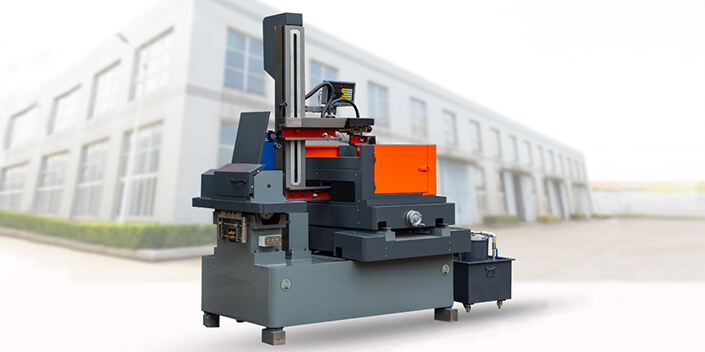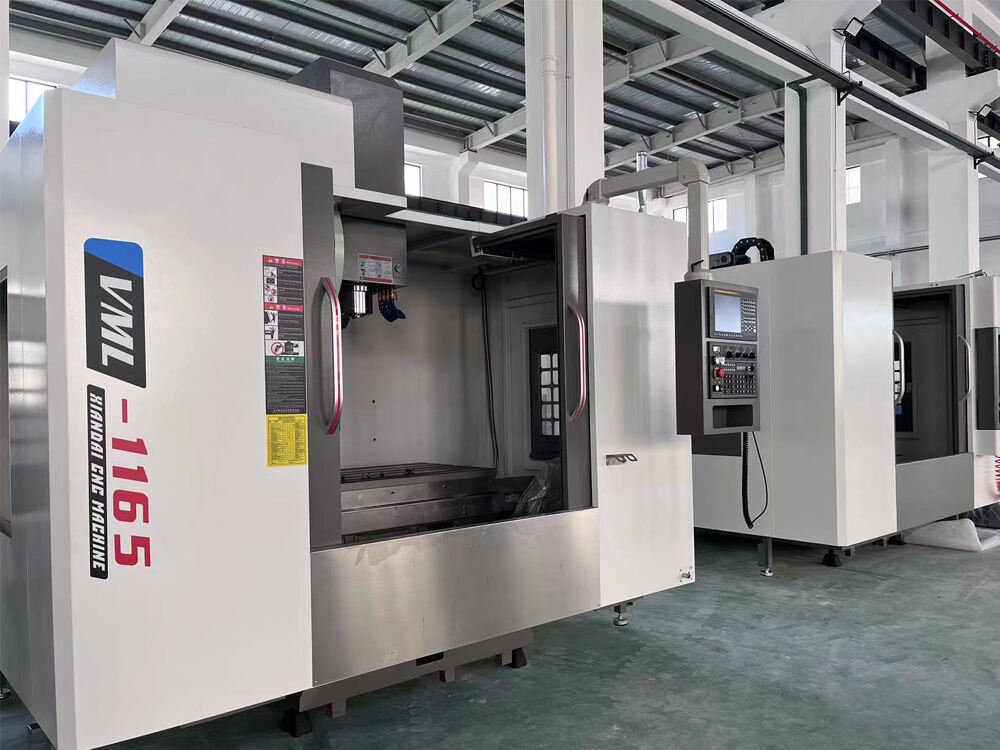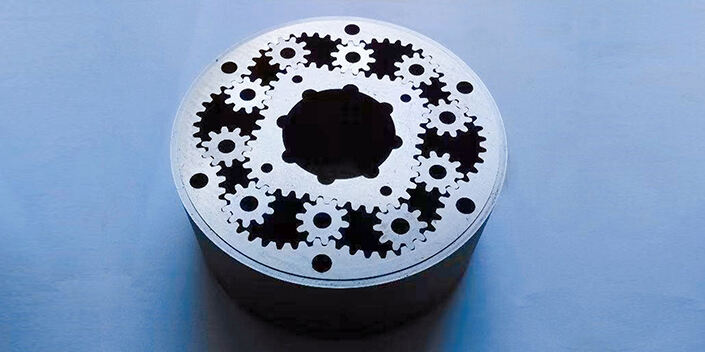How Wire EDM Machines Work: Principles of Non-Contact Precision Cutting
What Is Wire EDM? A Fundamental Overview
Wire EDM works by creating tiny electrical sparks between a thin wire and the material being cut. The wire, usually made of brass or copper and about .004 to .012 inches thick, sends out quick bursts of electricity that basically melt away bits of metal from whatever part needs shaping. What makes this different from regular cutting methods is that there's no actual touching involved, so tools don't get worn down over time and the material doesn't experience mechanical stress during the process. Because of these advantages, Wire EDM becomes especially useful when working with tough materials like Inconel or hardened tool steels that resist traditional machining techniques.
The Role of the Wire Electrode and Dielectric Fluid in Material Removal
A wire electrode serves dual purposes here - it conducts electricity and cuts through materials at the same time. As it follows pre-programmed routes, it stays submerged either in deionized water or some kind of oil-based dielectric fluid. What does this fluid do? Well, first off, it keeps the area insulated until there's enough ionization going on. Then it helps cool down whatever gets vaporized during the process so we don't end up with unwanted recast layers forming. Plus, it washes away all that debris which makes sure our cuts stay accurate. When everything works right, we can achieve surface finishes with roughness values around 0.8 to 1.6 microinches. And those kerf widths? They typically measure less than 0.012 inches across, pretty impressive for such fine work.
How CNC Control Systems Enable Precision and Automation
Today's wire EDM machines can hit around ±0.0001 inch tolerance levels thanks to their computer numerical control (CNC) systems which manage everything from wire speed to discharge frequency and axis movement. These machines actually have smart algorithms that tweak power settings depending on what kind of material they're cutting and how thick it is. Meanwhile, special linear motors help position the wire with incredible precision at the sub-micron level. Take aerospace manufacturing for instance. When making those turbine slots, operators rely on real time spark monitoring to keep dimensions within 0.001 mm throughout entire production batches. This kind of accuracy makes all the difference when building components that need to fit together perfectly under extreme conditions.
Core Components of a Wire EDM Machine: Engineering Precision and Performance
Key Components of Wire EDM: Wire Electrode, Dielectric Fluid, Power Supply, and CNC Control System
When it comes to how well a wire EDM machine works, there are basically four main parts that need to work together properly. First off, we have the wire electrode, which is usually made from brass or sometimes brass coated with zinc. This thing creates those controlled electrical sparks that actually cut through the material by eroding it away bit by bit. Then there's this special dielectric fluid running through everything, typically just regular old deionized water. It does three important jobs at once: keeps things cool during cutting, washes away all the little bits of scrap metal, and helps maintain that tiny space where the sparks happen. Powering all this action is a high frequency power supply that sends out pulses of energy so the sparks keep happening consistently. Meanwhile, the CNC control system takes those fancy CAD drawings and turns them into exact movements for the wire, getting down to details as small as plus or minus 0.005 millimeters. Put all these together and what do you get? A machine capable of cutting right through conductive materials without touching them, even when they're as thick as 300 millimeters.
Dielectric Fluid Dynamics and Their Impact on Surface Roughness (Ra) Optimization
The speed at which dielectric fluid flows through the system along with how clean it stays has a major impact on the final surface quality. When the fluid dynamics are properly balanced, it helps get rid of debris more effectively, which means fewer recast layers form and there are less micro cracks in the finished product. Most shops find that keeping the flow between around 8 to 12 liters per minute works best because it reduces ionization resistance issues. This kind of setup typically produces surfaces with roughness measurements under Ra 0.8 microns even when working with hardened steels. For maintaining really clean fluid throughout the process, many manufacturers invest in advanced filtration equipment featuring 5 micron filters. These systems help keep contaminants out of the mix, something that becomes critical since impurities can lead to those annoying secondary discharges which ultimately mess with dimensional accuracy measurements.
Power Supply and Pulse Control: Balancing Material Removal Rate (MRR) and Overcut
Today's power supply systems incorporate adaptive pulse control technology that lets operators fine tune both current levels ranging from 0.5 to 32 amps and pulse durations between 0.1 and 200 microseconds. When working with aluminum alloys, increasing the current setting can actually raise material removal rates by around 20 to 40 percent, though this comes at a cost since overcut tends to creep up by approximately 0.015 to 0.03 millimeters. On the flip side, when manufacturers opt for lower energy pulses below 2 amps, they get incredibly smooth surfaces on titanium parts with roughness values under 0.4 micrometers, but naturally pay the price in slower cutting speeds. Finding the right sweet spot matters a lot in industries such as aerospace manufacturing, particularly when crafting turbine blades where dimensional accuracy within plus or minus 0.01 mm makes all the difference between success and failure in flight performance.
Tension and Guidance Systems for Consistent Wire Performance
The right amount of wire tension, usually between 8 and 12 Newtons, works together with guidance systems to keep the cutting path steady throughout operations. When machines run for long periods, automatic tension compensators come into play to handle the natural expansion caused by heat buildup. This helps cut down on broken wires significantly, around 70% less when working with tough materials such as Inconel 718 that resist normal cutting processes. Special diamond coated guides are what keeps everything aligned within just plus or minus 2 micrometers accuracy, which matters a lot when making intricate shapes and contours. With these advanced systems in place, manufacturers can run continuous production cycles lasting up to 200 hours straight without interruption, something particularly valuable in the demanding field of medical implant fabrication where precision is absolutely critical.
Cutting High-Tensile Materials with Wire EDM: Overcoming Challenges in Hard Alloys
Use of Wire EDM for Cutting Hard and High-Tensile Materials Like Tool Steel and Inconel
Wire EDM machines handle materials that regular cutting techniques just can't manage, think tool steels like D2 and H13, Inconel 718, those tough titanium alloys too. The whole process works through sparks between electrodes, basically wearing away material without touching it directly. Even when dealing with stuff hardened to around 65 HRC on the Rockwell scale, the workpiece stays intact structurally. For manufacturers in aerospace or mold making sectors where parts need to withstand extreme conditions, this matters a lot. Turbine blade producers especially rely on these capabilities since traditional machining would either fail or damage the delicate microstructure of their alloy components.
Minimal Distortion and No Physical Contact Cutting: Advantages in Structural Integrity
Wire EDM works differently from other methods because it doesn't apply direct pressure or create those heat affected zones that mess with the metal's structure. Take thin walled titanium parts for instance we've seen some real improvements here. One study found that distortion drops around 92 percent when using wire EDM instead of laser cutting according to the Precision Manufacturing Report last year. That kind of precision matters a lot in fields like medical implants and aerospace engineering. When materials stay intact at a microscopic level, the final products perform better under stress and last longer in service.
Overcut and Dimensional Accuracy in Wire EDM: Managing Tolerances in Hard Materials
Achieving ±0.005 mm tolerances in hard materials requires precise control over spark energy and wire offset compensation. Advanced CNC systems automatically adjust parameters like pulse duration and dielectric flushing to mitigate overcut—a critical factor when machining intricate fuel nozzle geometries or thread-guiding inserts.
Case Study: Wire EDM Machining of Titanium in Aerospace Components
A recent aerospace project demonstrated wire EDM’s ability to machine titanium fuel system components with a surface roughness (Ra) of 0.4 µm and positional accuracy within ±0.008 mm. The process eliminated post-machining stress relief steps, reducing lead times by 34% while meeting AS9100 aerospace quality standards.
Achieving Tight Tolerances and Superior Surface Finish in Wire EDM
High-Precision Cutting of Hard Materials with Sub-Micron Repeatability
Wire EDM machines today can hit pretty impressive accuracy levels around ±0.002 mm (about 0.00008 inches) when working with tough materials such as tungsten carbide or Inconel, which beats what most traditional machining techniques can manage. The reason behind this level of precision? Well, these machines rely on sophisticated computer-controlled wire movement along with systems that adjust for heat effects in real time, basically fighting back against the natural expansion that happens during cutting processes. Take aerospace applications for instance. When making those tiny slots in turbine blades, manufacturers need almost microscopic consistency just to keep air flowing properly through the engine. Wire EDM handles this job exceptionally well, producing surface finishes around Ra 0.8 microns right off the machine without needing any extra polishing steps afterward.
Surface Roughness (Ra) Optimization Through Parameter Tuning
Operators optimize surface quality by adjusting three key parameters:
| Parameter | Impact on Surface Finish | Typical Range |
|---|---|---|
| Pulse Duration | Shorter pulses = finer Ra | 0.1–100 µs |
| Wire Tension | Higher tension = reduced vibration | 8–25 N |
| Flushing Pressure | Improved debris removal = smoother cuts | 0.5–1.5 bar |
Tuning these parameters reduces average surface roughness by 42% in titanium components while maintaining a material removal rate (MRR) of 18 mm³/min.
Trend: Advancements in Adaptive Control for Real-Time Tolerance Management
Adaptive control systems are changing the game these days by using machine learning to spot and fix size problems as parts get cut. The tech looks at things like how much electricity sparks between electrodes, where the cutting wire bends, and what's happening with the special fluid used in the process, then tweaks the power levels on its own. A company making airplane parts saw their error rate drop by almost a third when they started using these smart controls for fuel nozzles. What makes this so cool is how it connects fast rough cuts that allow for about 0.01 mm variation with super precise finishing work that needs only 0.002 mm accuracy. This means manufacturers can make complicated shapes all in one go instead of switching setups multiple times, which saves both time and money.
Applications Across Industries: Aerospace, Medical, and Automotive Use Cases
Wire EDM machines have become indispensable across manufacturing sectors requiring extreme precision in hardened materials. Their non-contact cutting process and sub-micron accuracy solve critical challenges in three key industries:
Aerospace: Fuel Nozzles and Turbine Blades Requiring High-Tensile Strength
In the aerospace industry, wire EDM has become essential for making turbine blades and fuel nozzles out of tough materials like Inconel 718. These nickel-based superalloys can handle extreme heat, staying strong even when temperatures exceed 1,400 degrees Fahrenheit (around 760 Celsius). What makes wire EDM so valuable is that it doesn't apply physical pressure during cutting. This helps prevent those tiny cracks that often form in delicate airfoil sections while keeping the airflow channels within incredibly tight tolerances of about 0.0005 inches either way. Looking at recent data from various aerospace projects, manufacturers have found that switching to wire EDM for creating cooling holes in turbine blades cuts down on extra finishing work by roughly two thirds compared to traditional laser drilling methods.
Medical: Implants and Surgical Tools Demanding Precision and Tight Tolerances
Medical device producers leverage wire EDM’s 5-micron repeatability to create titanium spinal implants with osteoconductive surface textures and surgical shears with edge radii under 10µm. This capability eliminates manual polishing steps that traditionally caused 12-15% yield loss in stainless steel instrument production.
Automotive: Prototyping and Mold Making with Complex Contours
Automotive engineers employ wire EDM machines to cut hardened tool steel molds for complex headlight reflectors and transmission components. The process achieves draft angles up to 45° in carbide trim dies while maintaining surface finishes below Ra 0.4µm—critical for high-volume injection molding without post-processing.
FAQ
What is the main advantage of using Wire EDM?
The primary advantage of using Wire EDM is its ability to cut materials without physical contact, reducing wear and tear on tools and minimizing mechanical stress on the materials being cut. This is especially beneficial when working with hard materials that are difficult to machine using traditional methods.
How does Wire EDM achieve precision?
Wire EDM achieves precision through its computer numerical control (CNC) systems, which manage variables like wire speed, discharge frequency, and axis movement. Smart algorithms adjust power settings based on the material type and thickness, enabling precise cuts.
What roles do wire electrode and dielectric fluid play in Wire EDM?
The wire electrode conducts electricity and erodes material, while the dielectric fluid acts as an insulator, sweep debris, and cools the area to prevent unwanted recast layers from forming.
Can Wire EDM handle high-tensile materials?
Yes, Wire EDM is excellent at handling high-tensile materials like tool steel and Inconel because the cutting process involves electrical discharges rather than physical contact, keeping the material's structural integrity intact.
What industries benefit most from Wire EDM?
Industries like aerospace, medical, and automotive benefit greatly from Wire EDM for tasks requiring extreme precision and durable components, including turbine blades, surgical tools, and complex molds.
Table of Contents
- How Wire EDM Machines Work: Principles of Non-Contact Precision Cutting
-
Core Components of a Wire EDM Machine: Engineering Precision and Performance
- Key Components of Wire EDM: Wire Electrode, Dielectric Fluid, Power Supply, and CNC Control System
- Dielectric Fluid Dynamics and Their Impact on Surface Roughness (Ra) Optimization
- Power Supply and Pulse Control: Balancing Material Removal Rate (MRR) and Overcut
- Tension and Guidance Systems for Consistent Wire Performance
-
Cutting High-Tensile Materials with Wire EDM: Overcoming Challenges in Hard Alloys
- Use of Wire EDM for Cutting Hard and High-Tensile Materials Like Tool Steel and Inconel
- Minimal Distortion and No Physical Contact Cutting: Advantages in Structural Integrity
- Overcut and Dimensional Accuracy in Wire EDM: Managing Tolerances in Hard Materials
- Case Study: Wire EDM Machining of Titanium in Aerospace Components
- Achieving Tight Tolerances and Superior Surface Finish in Wire EDM
- Applications Across Industries: Aerospace, Medical, and Automotive Use Cases
- FAQ





